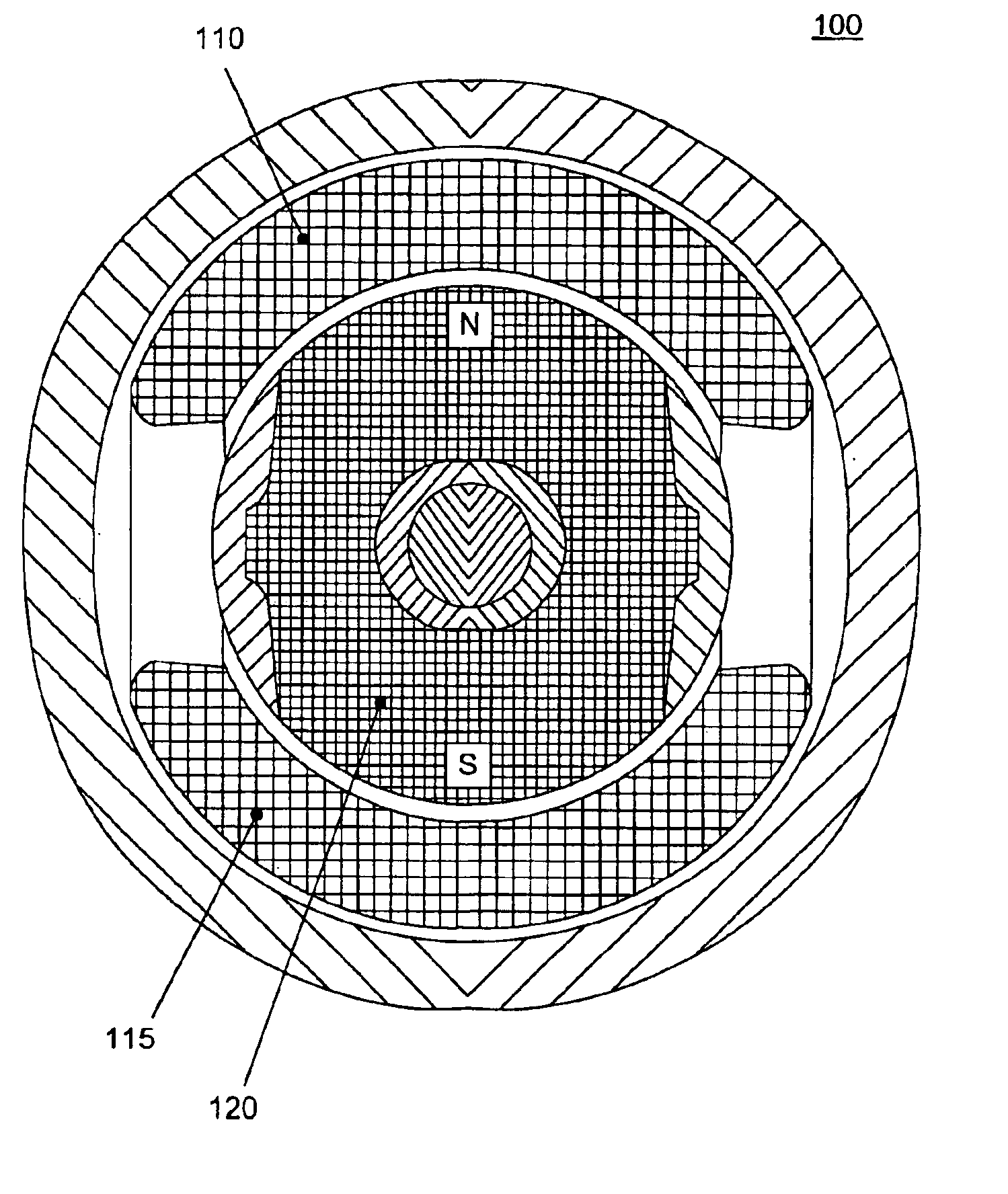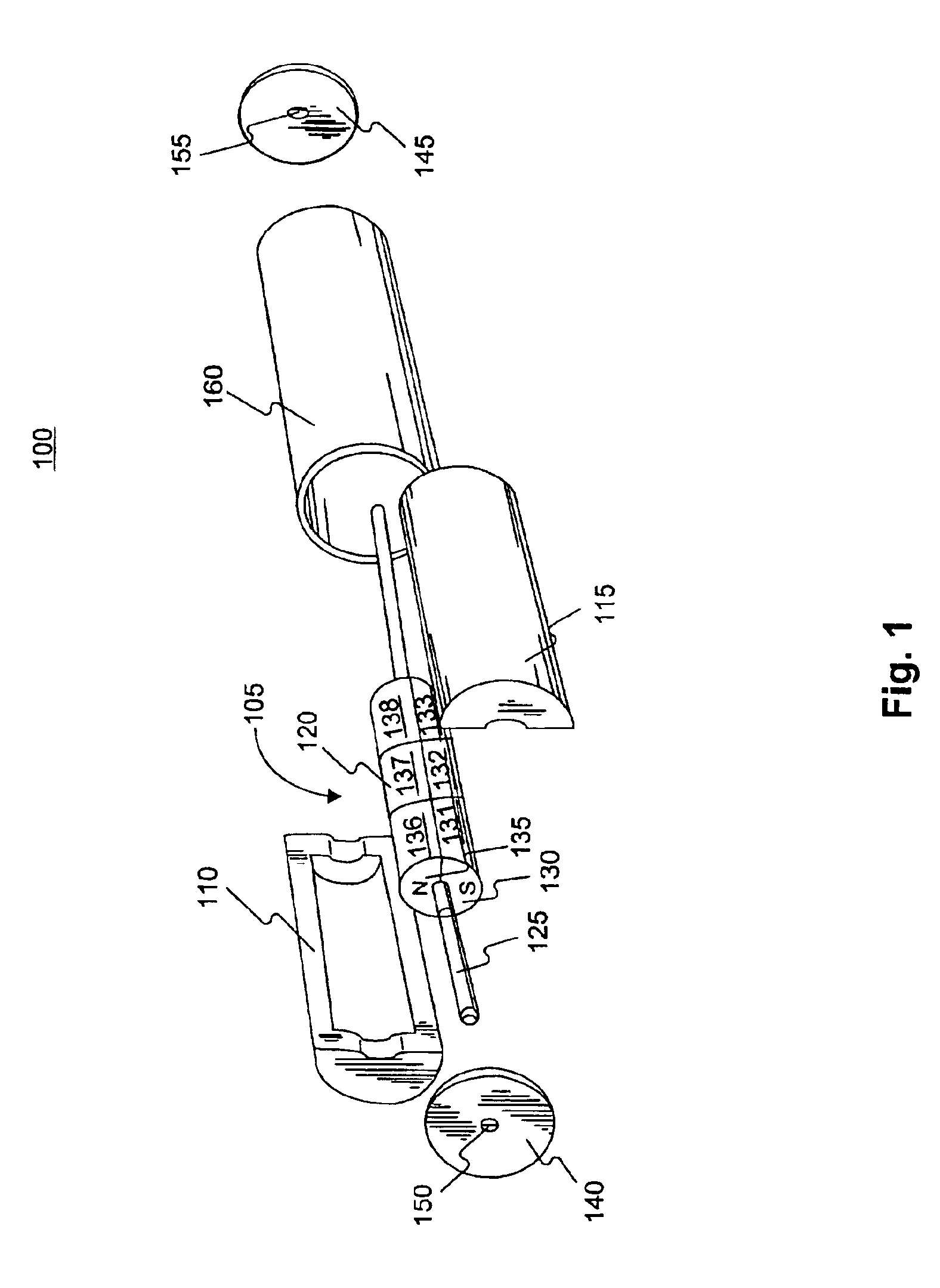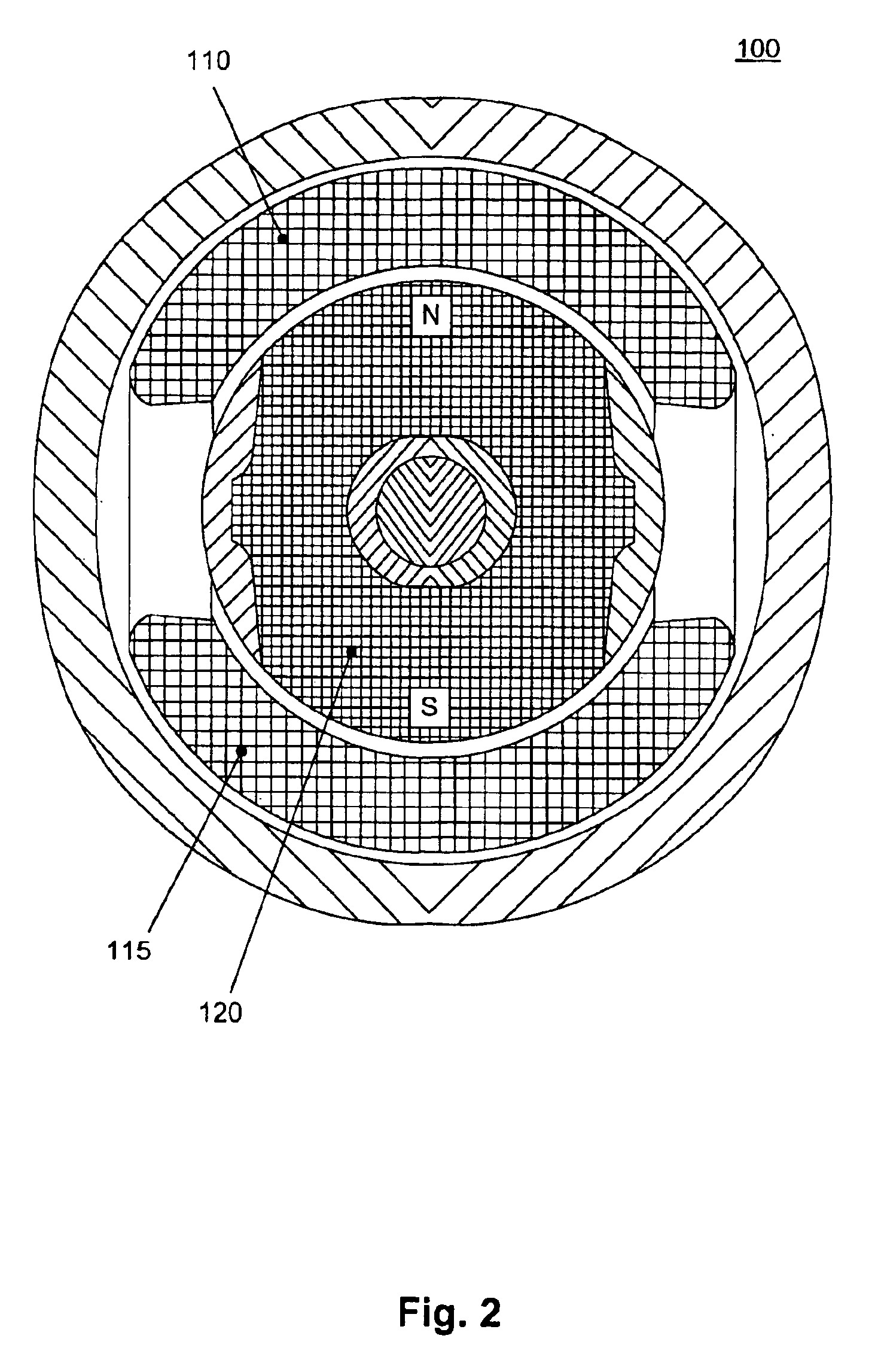Alternating current axially oscillating motor
a technology of axial oscillation and alternating current, which is applied in the direction of motor/generator/converter stopper, dynamo-electric converter control, magnetic body, etc., can solve the problems of magnetic locking, conventional motors only giving optimal performance, and rotor may rotate to an undesired position
- Summary
- Abstract
- Description
- Claims
- Application Information
AI Technical Summary
Benefits of technology
Problems solved by technology
Method used
Image
Examples
Embodiment Construction
[0023]Reference will now be made to various embodiments according to this invention, examples of which are shown in the accompanying drawings and will be obvious from the description of the invention. In the drawings, the same reference numbers represent the same or similar elements in the different drawings whenever possible.
[0024]Embodiments of the present invention provide an alternating current (AC) oscillating motor that, as compared with conventional motors, have an increased efficiency by producing the same torque at a reduced power consumption, a higher torque at approximately the same power consumption, or a combination of both. This increased efficiency may be achieved at least by employing, for example, powerful magnets in the rotor, eliminating asymmetrical magnetic reluctance, or a combination of both. The increased efficiency may also allow embodiments of the invention to operate at lower voltages, for example, at 20 V. Lower voltages can be advantageous for electric t...
PUM
 Login to View More
Login to View More Abstract
Description
Claims
Application Information
 Login to View More
Login to View More - R&D
- Intellectual Property
- Life Sciences
- Materials
- Tech Scout
- Unparalleled Data Quality
- Higher Quality Content
- 60% Fewer Hallucinations
Browse by: Latest US Patents, China's latest patents, Technical Efficacy Thesaurus, Application Domain, Technology Topic, Popular Technical Reports.
© 2025 PatSnap. All rights reserved.Legal|Privacy policy|Modern Slavery Act Transparency Statement|Sitemap|About US| Contact US: help@patsnap.com



